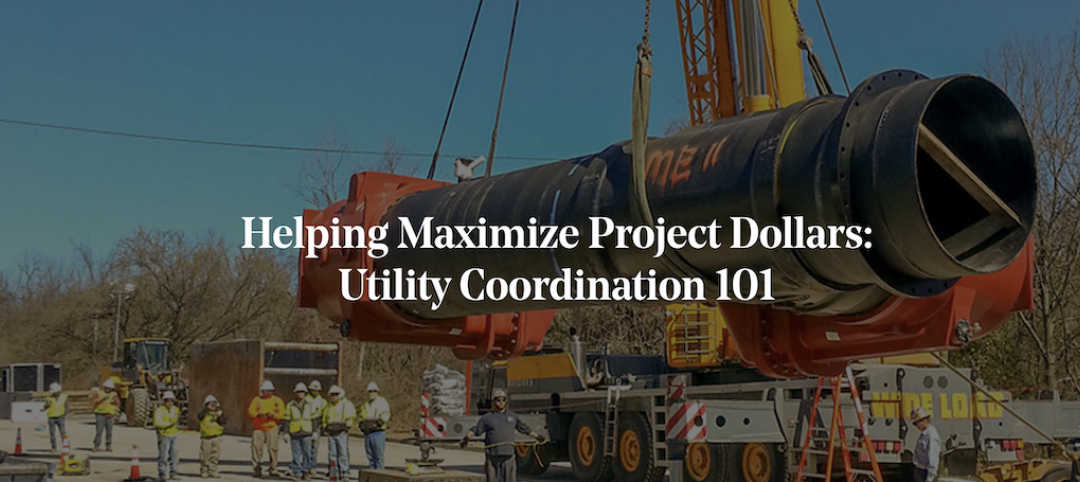As it becomes clear that building more, bigger roads will not properly address our population growth and traffic congestion issues, interest in public transit is booming. To stay up-to-speed on the issues affecting the communities we serve, GS&P is growing our in-house transit expertise, and becoming more active in local transit initiatives. Our Intelligent Mobility Task Force continues to focus on assessing the technical needs and requirements for growing our company’s transit capabilities.
One of our best resources is certainly our geographic scope. We have more than 20 offices in the U.S., and several of them, including my home, Charlotte, as well as Miami and Dallas, have established transit systems. In Georgia, the state legislature just passed a sweeping transportation bill that has the potential to transform transit in the Atlanta area. The bill awaits the governor’s signature, and he has expressed great support for the efforts to expand transportation efforts. Then there’s Nashville, which is voting on a proposed comprehensive transit plan next month, and several other cities that are starting the transit conversation.
In every city with transit, there are some success stories, some challenges and plenty of lessons learned. That’s why I believe it’s essential that we look to one another for guidance as we all navigate the best path forward. Let’s begin by reviewing the pros & cons of transit in some of the cities where GS&P has offices:
Lessons Learned
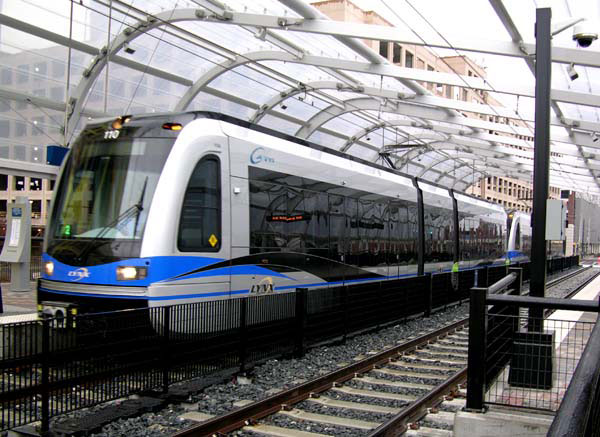 A light rail train prepares to depart Charlotte Transportation Center/Arena (LYNX station) in Center City Charlotte.
A light rail train prepares to depart Charlotte Transportation Center/Arena (LYNX station) in Center City Charlotte.
In Charlotte, where I was born and raised, we’ve operated the Charlotte Area Transit System (CATS) since 1999. On the whole, our transit system is considered a tremendous success. Many other metro areas look to us as an example of a progressive city, as we were one of the first cities of our size to introduce a light rail system. But with the success, we’ve certainly had our challenges. Funding challenges have been and will continue to be one of the major obstacles to Charlotte’s transit evolution, but for the most part, our system is well-regarded by the public – residents and visitors alike. Our latest light rail addition is called the LYNX Blue Line Extension, and our bus transit line to the airport is called the Sprinter. We also have a streetcar called the City LYNX Gold Line through the city center. Just last month, a major extension to our Blue Line rail opened, which added 11 new stations along 9.4 new miles of track to the University of North Carolina at Charlotte. There are other major expansions and improvements planned in the near future.
The most obvious shortcoming of our system is its limited scale and reach. Based on our ‘Centers and Corridors Plan’, the Blue Line runs north/south through downtown Charlotte. It serves people along that particular route quite well, but to truly become a transit-oriented town, we need more rail lines supporting more effective movement through all parts of the city. As it is now, a person originating from anywhere besides the Blue Line route and/or going anywhere besides the Blue Line route has to use a second mode of transport, be it a personal vehicle, rideshare service, bicycle or bus. This might be simple enough, but most often, using a single mode of transport like a rail line to travel from origin to destination is preferred. The original rail line in the South Corridor, approximately 10 miles south of Charlotte, running almost to Pineville, continues to serve Charlotte well, providing the city service approximately every 10 minutes during peak hours.
A December article in The Charlotte Observer also worries that “new multi-family housing along transit lines will be above average market rate, excluding the very people who most need transit to access jobs and educational opportunities.” This point illustrates the importance of taking a multi-faceted approach to transit. Rail routes and bus service can’t be planned in a vacuum. Success requires partnership and buy-in from commercial and residential real estate developers, business owners and political leaders in order to create a well-integrated system with the right mix of live, work and play along routes.
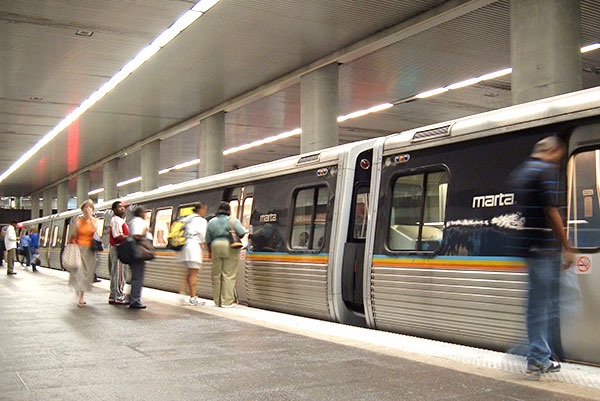 A busy MARTA rail station in Atlanta.
A busy MARTA rail station in Atlanta.
In Atlanta, despite its somewhat sour earlier reputation, the Metropolitan Atlanta Rapid Transit Authority (MARTA) actually pulls in more riders per station than the transit systems in Chicago, Philadelphia and Baltimore. It’s a more robust system than Charlotte’s, including 48 miles of rail line connected to an extensive network of bus routes. The rail lines look like five spokes on a wheel, terminating in two locations northeast of the city, one location south of the city, one location east of the city and one location west of the city, connecting in a central location downtown. All 110 MARTA bus lines feed into or intersect with rail lines, reducing last-mile connectivity issues and greatly improving ease of use. But in spite of this, many residents still consider MARTA to be inconvenient and unsafe. Though statistics show that MARTA is one of the country’s safest public transit systems, several high-profile criminal cases have fueled concerns that have been difficult to shake. Additionally, a total lack of state funding for the program has also restricted the ability to implement improvements. However, the recent bill that passed Georgia’s state legislature represents a significant milestone in real funding by the state and a regional effort toward transit planning and expansion in Metro Atlanta.
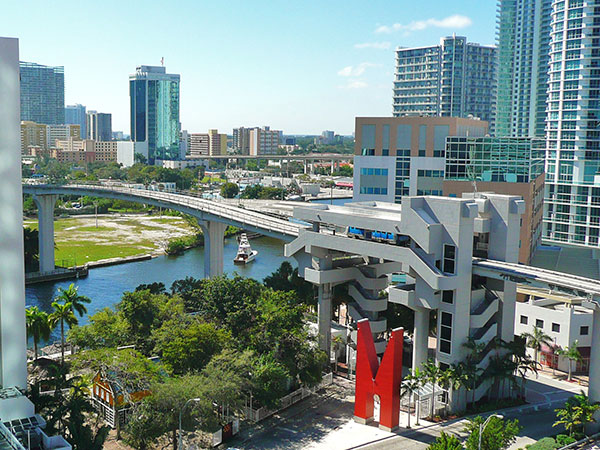 Elevated tracks approaching a Metrorail station in Miami.
Elevated tracks approaching a Metrorail station in Miami.
In Miami, the Miami-Dade Transit (MDT) system is consistently ranked among the nation’s best. A 2016 article in the Miami New Times asked “Can Miami-Dade County Make Public Transit Cool?” They cite the millennial population’s desire to be car-less as a major contributor to transit’s success. MDT’s shortcomings are, again in this case, related to the system not being robust enough. It will be interesting to see whether the planned expansions – including additional Metrorail cars and new buses – will alleviate those concerns.
In Dallas, the Dallas Area Rapid Transit (DART) system includes light rail, commuter rail, shuttles and a large bus system. DART’s light rail is also a hub-and-spoke style, with service connecting many highly populated suburbs with the city center. In fact, DART is the country’s longest light-rail system with around 90 miles of track. The city boasts that transit has generated more than $8 billion in economic growth, considering the many transit-oriented developments that have sprung up around the 62 DART stations. And though the cost of the system has been controversial, many people believe that DART is transforming the region’s growth and making transit believers out of a population that was previously very car-centric.
Success Stories Across the Country
In New York City of course, “car culture” doesn’t have a stronghold like it does in many other U.S. cities. For the most part, Big Apple residents have embraced and accepted transit as the norm, and subways, trains and buses have become deeply interwoven in the city’s fabric. It begs the question: “Which came first? The chicken or the egg?” It’s difficult to know whether New Yorkers’ transit culture encouraged the development of an extensive highly efficient, usable transit system or vice versa. Either way, it’s a long-standing success story.
We can also look to other cities smaller than New York for best practices. Seattle, Denver and Portland are consistently ranked among the best transit systems in medium-sized cities, along with Chicago, Washington, D.C., Boston and Baltimore, and Toronto and Montreal in Canada, as some of North America’s best large-city systems. Most of these are well-regarded in terms of rider connectivity, accessibility, efficiency, cleanliness and safety.
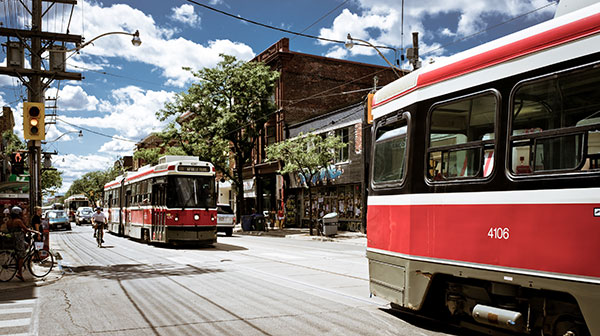 Transit comes in a wide variety of forms. In Toronto, Ontario, Canada, streetcars run on rails in the middle of streets.
Transit comes in a wide variety of forms. In Toronto, Ontario, Canada, streetcars run on rails in the middle of streets.
Transit Takes Time and Support
In nearly every example of public transit, there have been challenges for cities developing systems and needing financing and longer-range plans. For cities that are rooted in car culture, it can be difficult to make the case for rail and buses, even if those solutions could greatly reduce time wasted in vehicles. And when public acceptance is tenuous at best, it can be very difficult to obtain the funding necessary to “do transit the right way” – and we know that proper funding is the foundation of any successful system, as DOTs and municipalities often don’t have a funding source or budget that supports improvements beyond building new roads. Additionally, when a transit system isn’t designed and implemented comprehensively, people will often choose their personal vehicles. So it’s difficult to break the cycle of car culture, but it is possible. And it seems the best approach is going “all in” with a robust plan, not tiptoeing into the transit waters.
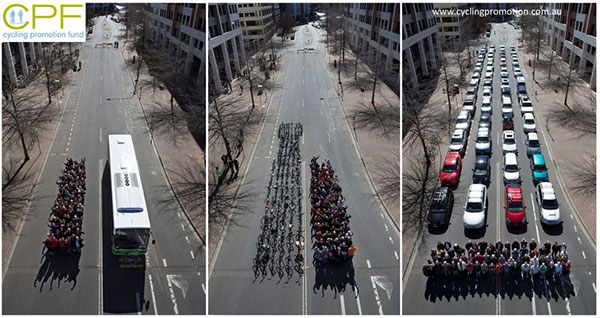 This compelling image from the Cycling Promotion Fund shows how much space 60 people take on a bus versus on bicycles versus in personal vehicles. Source: www.cyclingpromotion.org.
This compelling image from the Cycling Promotion Fund shows how much space 60 people take on a bus versus on bicycles versus in personal vehicles. Source: www.cyclingpromotion.org.
In Charlotte, we are still looking to build momentum, but we have a solid transit foundation to grow from. And in Nashville, most experts agree that the proposed plan – and the funding mechanism to reliably support its implementation – is comprehensive enough to make the system useful and to reduce the congestion expected over the coming decades.
We simply cannot pave our way to a solution (in fact, the right-of-way acquisition costs for new vehicle lanes far exceeds the cost to actually pave roads), and the growing popularity of Uber, Lyft and eventually autonomous vehicles will not decrease the number of vehicles on our roadways. There’s no doubt that our world is changing and continued population growth will demand that we change our habits. I believe those cities that are making an effort to get ahead of the curve will reap the most benefit.
More from Author
Gresham Smith | Oct 16, 2024
How AI can augment the design visualization process
Blog author Tim Beecken, AIA, uses the design of an airport as a case-study for AI’s potential in design visualizations.
Gresham Smith | Aug 17, 2023
How to design for adaptive reuse: Don’t reinvent the wheel
Gresham Smith demonstrates the opportunities of adaptive reuse, specifically reusing empty big-box retail and malls, many of which sit unused or underutilized across the country.
Gresham Smith | May 24, 2023
Designing spaces that promote enrollment
Alyson Mandeville, Higher Education Practice Leader, argues that colleges and universities need to shift their business model—with the help of designers.
Gresham Smith | Apr 24, 2023
Smart savings: Commissioning for the hybrid workplace
Joe Crowe, Senior Mechanical Engineer, Gresham Smith, shares smart savings tips for facility managers and building owners of hybrid workplaces.
Gresham Smith | Mar 20, 2023
3 ways prefabrication doubles as a sustainability strategy
Corie Baker, AIA, shares three modular Gresham Smith projects that found sustainability benefits from the use of prefabrication.
Gresham Smith | Jan 19, 2023
Maximizing access for everyone: A closer look at universal design in healthcare facilities
Maria Sanchez, Interior Designer at Gresham Smith, shares how universal design bolsters empathy and equity in healthcare facilities.
Gresham Smith | Dec 20, 2022
Designing for a first-in-the-world proton therapy cancer treatment system
Gresham Smith begins designing four proton therapy vaults for a Flint, Mich., medical center.
Gresham Smith | Nov 21, 2022
An inside look at the airport industry's plan to develop a digital twin guidebook
Zoë Fisher, AIA explores how design strategies are changing the way we deliver and design projects in the post-pandemic world.
Gresham Smith | Feb 13, 2022
Helping maximize project dollars: Utility coordination 101
In this post, I take a look at the utility coordination services our Transportation group offers to our clients in an attempt to minimize delays and avoid unforeseen costs.
Gresham Smith | May 7, 2021
Private practice: Designing healthcare spaces that promote patient privacy
If a facility violates HIPAA rules, the penalty can be costly to both their reputation and wallet, with fines up to $250,000 depending on the severity.










